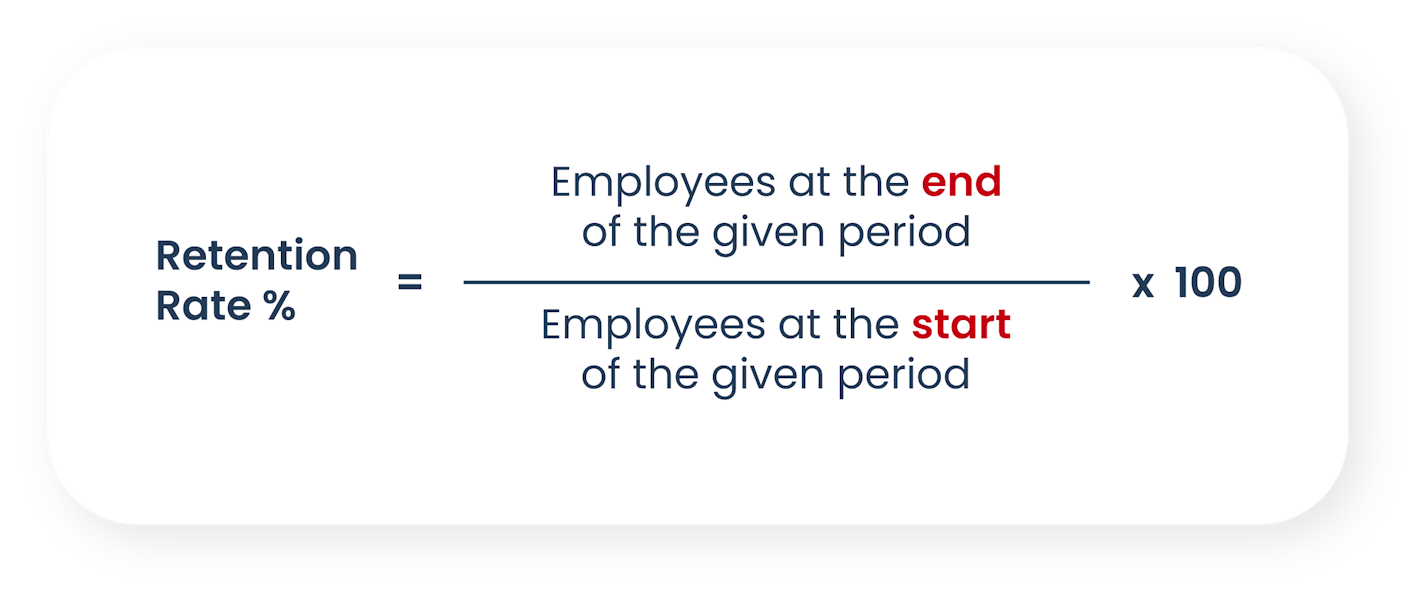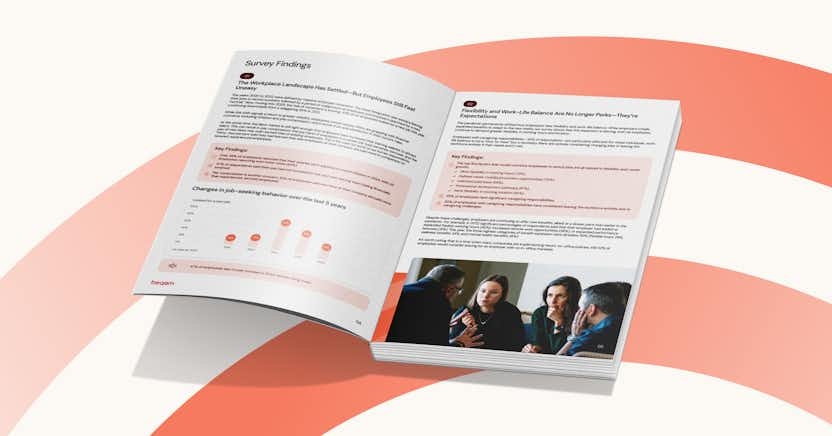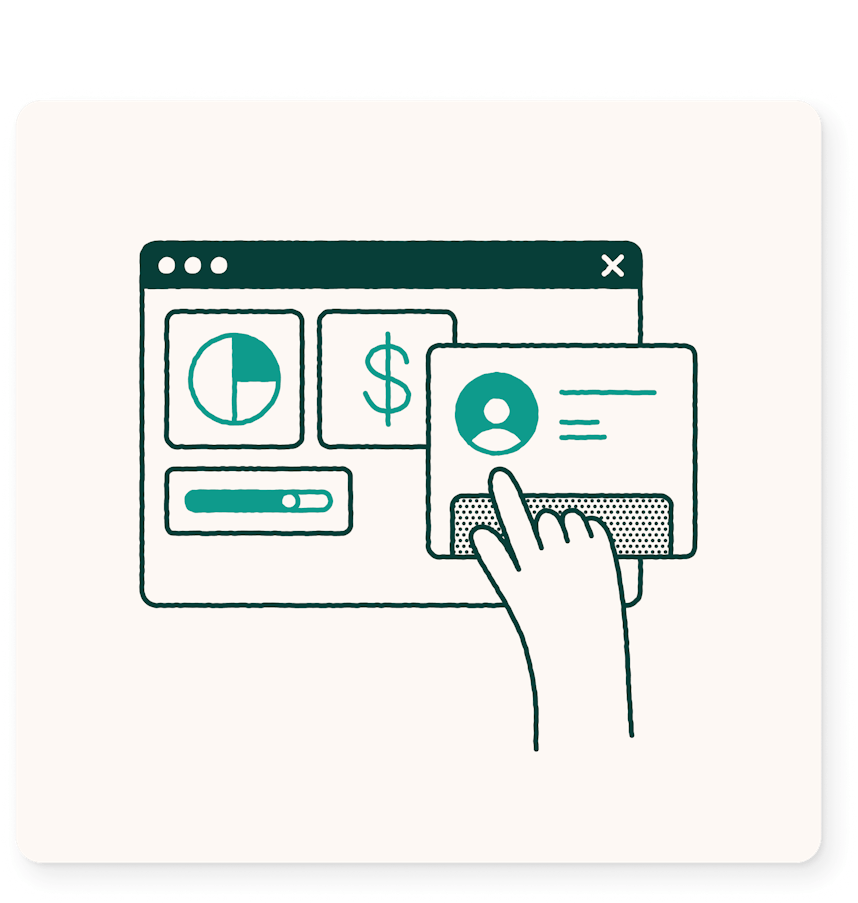Employee Retention Strategies: How to Successfully Retain Talent

With the Great Resignation still going on and the excessive cost of replacing workers, developing effective employee retention strategies is critical.
Over half of currently employed workers claim they are watching for or actively seeking a new job. Employees may leave their current role due to factors such as job disengagement, unfair compensation, inadequate support, or a lack of recognition.
Quiet quitting is another recent trend where dissatisfied employees contribute the bare minimum effort, time, and enthusiasm to their roles. They refrain from quitting to continue collecting a salary. Such occurrences put a significant strain on organizations by decreasing overall productivity and creating a negative workplace culture.
A solid understanding of the reasons behind employee resignation and ‘quiet quitting” helps organizations design appropriate measures to drive employee job satisfaction. This article provides insight into the benefits of high talent retention and highlights HR’s vital role in fostering long-term employee engagement.
What is talent retention?
Talent retention is the process of reducing turnover rates to keep qualified and experienced employees. In some cases, employee retention and talent retention can be used interchangeably as they both refer to organizations’ efforts to keep valuable employees within the company.
However, for this article, we distinguish talent retention as the practice of retaining high-potential or specialized individuals whose skills and expertise are critical to the company’s success, as opposed to employee retention and staff retention, which refer to keeping all employees within the organization.
The talent retention rate formula
To calculate your retention rate, divide the number of employees at the end of a set period by the number of employees at the start of the period. Multiply the result by 100 to determine your organization’s retention rate percentage.

Benefits of high staff retention
Here are the top benefits of talent retention:
- Increased productivity: It can take employees up to 8 months to reach full productivity. Once employees are fully acquainted with their responsibilities, they can contribute more meaningfully to the organization and produce high-quality results.
- Better employee morale: Employees who have established long-term careers within an organization and have a strong sense of job security will be more confident and motivated to tackle new challenges. This subsequently increases morale as employees will feel a sense of belonging and loyalty to their company.
- Reduced costs: Replacing employees costs significantly more than retaining them. The recruitment and training process incur extra expenses and resources that can be avoided by maintaining a stable workforce through talent retention tactics.
- Improved customer service: Long-term employees can enhance an organization’s customer experience, particularly in client-facing roles. As employees continue in their roles over long periods, they will become more familiar with the organization’s products, services, and processes, allowing them to provide higher-quality assistance to customers.
- Stronger employee loyalty: As employees feel supported and appreciated, they are more likely to remain loyal to their employer. Rather than seeking alternative opportunities, employees will become more invested in their current role and the company’s overall success.
Reasons for low talent retention
Your business may have low staff retention due to:
- Employees not feeling adequately supported or recognized for their contributions
- Poor company culture
- No clear career advancement opportunities
- Unsatisfactory compensation
- Limited work arrangement flexibility
- Lack of recognition
- Ineffective communication channels
- High levels of stress or burnout
How to retain employees: 4 tested employee retention strategies
By integrating employee retention strategies, organizations enhance their job satisfaction rates and hold onto top performers.
1. Offer fair and competitive compensation
Offering competitive compensation that reflects each employee’s value and contribution to the organization is paramount for retaining staff members. Salaries must, at a minimum, align with industry standards or, preferably, exceed them to reduce any temptation for employees to leave the organization for better offers.
Achieving pay equity is critical to ensuring fairness among employees when managing compensation, eliminating the impact of factors such as gender, race, age, or other demographics. Instead, each employee’s skill, experience, and performance will be the primary factors considered when determining compensation.
Organizations should regularly review and adjust their compensation structure to demonstrate their commitment to pay equity, which will further retain high-quality employees who would otherwise seek alternate opportunities.
Compensation management software will streamline this process and remove unnecessary complexities, allowing organizations to automate various compensation-related processes, including salary adjustments, bonus management, pay equity initiatives, and long-term incentives. Organizations may also choose to leverage AI to receive specialized insights. This enables them to make data-driven decisions about employee compensation that are informed by up-to-date information and accurate calculations.
2. Arrange socialization practices
Fostering closer relationships between employees will create a positive work environment and enhance job satisfaction, increasing retention rates. Organizations can build a more connected workplace by arranging socialization events, such as team-building activities, company outings, and happy hours.
Such events allow employees to connect on a personal level, establishing a sense of belonging and increasing their motivation to remain with the company. Closer employee connections will also facilitate better collaboration, further boosting productivity.
3. Allow flexible working arrangements
Flexible work arrangements give employees greater control, reducing their stress and allowing them to maintain a better work-life balance.
Flexible hours, part-time options, and work-from-home opportunities are key examples of working arrangements that can attract and retain talented employees. Communicating with employees enables organizations to understand which flexible work arrangements will benefit them most, allowing for a tailored approach that meets individual and organizational needs.
4. Establish a supportive culture
Organizations can effectively retain talent by being a good place to work. By prioritizing employee well-being, celebrating successes, and encouraging transparency, organizations will establish a supportive culture that empowers and motivates employees.
Understanding what is important to the employee experience, and establishing a culture of feedback and recognition goes a long way towards making employees feel like they are a part of something larger.
HR’s role in employee retention
HR plays a vital part in the retention process by implementing strategies and initiatives that focus on employee well-being, professional growth, and job satisfaction.
Utilizing data to establish equitable salaries
HR can leverage data and insights to create a fair and efficient compensation process. HR must prioritize pay equity through this process to effectively support the organization’s talent retention strategies. Specialized workforce analytics and pay equity tools like those those offered in beqom's complete compensation platform can aid HR in identifying pay gaps, determining their root causes, and proposing remediation plans to ensure equitable salaries are established company-wide.
Providing constructive feedback
Through clear, actionable, and relevant feedback systems, HR can reinforce positive behaviors, boost morale, and push employees to work towards developing their skills, creating a supportive and collaborative company culture.
Although annual and semi-annual performance reviews are the most common feedback processes in companies, this approach can hold back employees rather than push them forward, which may cause them to seek roles in more supportive companies. Instead, providing continuous feedback throughout the year will encourage employees to consistently work toward their objectives and remain engaged in their roles.
Fostering employee interactions
By encouraging regular interactions among employees, HR can support the development of strong interpersonal relationships and promote collaboration within the workplace.
While traditional performance reviews offer valuable insights from managers, incorporating peer feedback, as seen in Continuous Performance Management (CPM) systems, can provide valuable observations and perspectives that would otherwise be missed or overlooked. This form of feedback will also encourage continuous employee development, allowing them to feel recognized and supported, further enticing them to remain in the organization.
Creating effective recognition campaigns
HR can further promote retention through regular dedicated campaigns, such as employee-of-the-month awards, personalized certificates, gift cards, trophy ceremonies, the granting of additional leave days, and similar incentives. Organizing such events involves using flexible employee recognition software to engage your workforce, which also facilitates efficient budget control and reward management.
Keys to talent retention
Talent retention goes beyond keeping employees on the payroll. It involves creating a fair, supportive, positive, and collaborative work environment that motivates employees to not only stay in their roles but also make meaningful contributions to their company.
Through initiatives such as flexible work arrangements, recognition campaigns, and socialization events, organizations can retain qualified employees, enhancing their brand reputation and reducing costs associated with high turnover rates.
This process can be streamlined with strategically implemented HR practices and specialized HR retention technology, further enhancing the organization’s ability to retain top talent.
Employee retention FAQs
Learn more about employee retention with these answers to common questions:
What are the three R’s of employee retention?
The three R’s of employee retention are as follows:
- Respect: Mutual respect is the foundation of a relationship between employees and employers. Respect encourages employees to communicate openly, effectively work in teams, and contribute to the organization. Valuing feedback, recognizing individual contributions, and providing opportunities for professional growth are key examples of organizational efforts to promote respect.
- Recognition: When employees are recognized for their efforts and feel appreciated for their contributions, they are more likely to be productive and will be motivated to continue performing at high levels. Organizations can engage in employee recognition and acknowledge practices such as hosting appreciation events, celebrating daily wins, and regularly sharing positive feedback.
- Rewards: Incorporating rewards into employee retention programs can increase morale, motivation, and job satisfaction. By offering tangible incentives such as bonuses, promotions, or other perks, organizations can ensure that employees will be less likely to seek alternative job opportunities.
What is talent retention strategy?
The talent retention strategy refers to efforts made by an organization to encourage employees to stay working within the company. This strategy involves initiatives and practices aimed at increasing pay equity, employee engagement, and job satisfaction.
How do you retain good talent?
Organizations can retain quality talent by offering competitive and fair compensation, arranging opportunities for employee socialization, allowing flexible working arrangements, and creating a supportive work environment.
For more information about how to use technology to support a healthy culture, engaged employees, and talent retention, contact us at beqom.
















